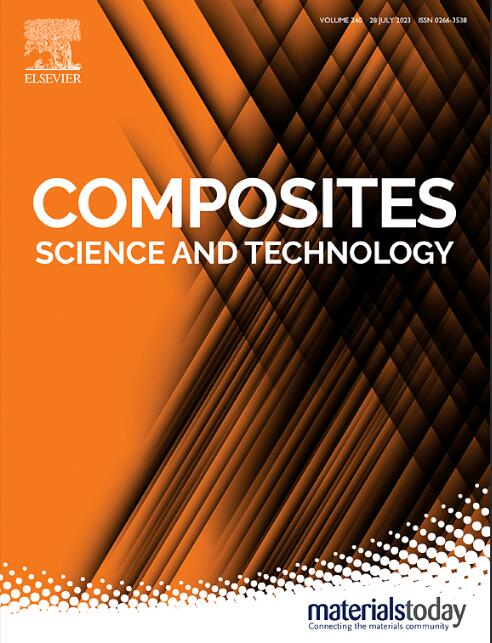AI-driven residual strength diagnostics of composites using their electrical behavior under low-stress cyclic loading
IF 8.3
1区 材料科学
Q1 MATERIALS SCIENCE, COMPOSITES
引用次数: 0
Abstract
A novel non-destructive testing (NDT) method was developed to predict the residual strength of composites, with unknown histories of fatigue damage, using their electrical behavior during a low stress cyclic loading test. Ninety-five samples, representing a wide range of fatigue damage levels, were prepared and subjected to a low-stress cyclic loading test, as a diagnostic test, while their electrical behavior was monitored. The samples then underwent quasi-static loading until failure to measure their corresponding residual strengths. To establish a relationship between the electrical behavior of samples during the diagnostic test and their corresponding residual strengths, various machine learning techniques were implemented. K-nearest neighbor (KNN), Decision Tree (DT), Random Forest, Extreme Gradient Boosting, Support Vector Regressor (SVR), and Feedforward Artificial Neural Networks were employed in two different approaches: as standalone predictors, and in an ensemble learning approach. The analysis demonstrated that a KNN meta-model, incorporating DT, SVR, and KNN as base models, in an ensemble framework, achieved the best performance, with a mean absolute percentage error (MAPE) of 5.7 % in predicting residual strength. This significant performance underscores the potential of our low-stress diagnostic test for predicting the residual strength of composites, even when the fatigue damage history is unknown.

利用复合材料在低应力循环载荷下的电学行为进行人工智能驱动的残余强度诊断
开发了一种新的无损检测(NDT)方法,利用复合材料在低应力循环加载试验中的电气行为来预测具有未知疲劳损伤历史的残余强度。制备了95个样品,代表了广泛的疲劳损伤水平,并进行了低应力循环加载试验,作为诊断试验,同时监测了它们的电气行为。然后试样进行准静态加载,直到无法测量其相应的残余强度。为了建立诊断测试过程中样品的电行为与其相应的残余强度之间的关系,实施了各种机器学习技术。k -最近邻(KNN)、决策树(DT)、随机森林、极端梯度增强、支持向量回归器(SVR)和前馈人工神经网络在两种不同的方法中被采用:作为独立预测器,以及在集成学习方法中。分析表明,在集成框架中,将DT、SVR和KNN作为基本模型的KNN元模型取得了最佳性能,预测剩余强度的平均绝对百分比误差(MAPE)为5.7%。这一显著的性能强调了我们的低应力诊断测试在预测复合材料残余强度方面的潜力,即使在疲劳损伤历史未知的情况下也是如此。
本文章由计算机程序翻译,如有差异,请以英文原文为准。
求助全文
约1分钟内获得全文
求助全文
来源期刊

Composites Science and Technology
工程技术-材料科学:复合
CiteScore
16.20
自引率
9.90%
发文量
611
审稿时长
33 days
期刊介绍:
Composites Science and Technology publishes refereed original articles on the fundamental and applied science of engineering composites. The focus of this journal is on polymeric matrix composites with reinforcements/fillers ranging from nano- to macro-scale. CSTE encourages manuscripts reporting unique, innovative contributions to the physics, chemistry, materials science and applied mechanics aspects of advanced composites.
Besides traditional fiber reinforced composites, novel composites with significant potential for engineering applications are encouraged.
 求助内容:
求助内容: 应助结果提醒方式:
应助结果提醒方式:


